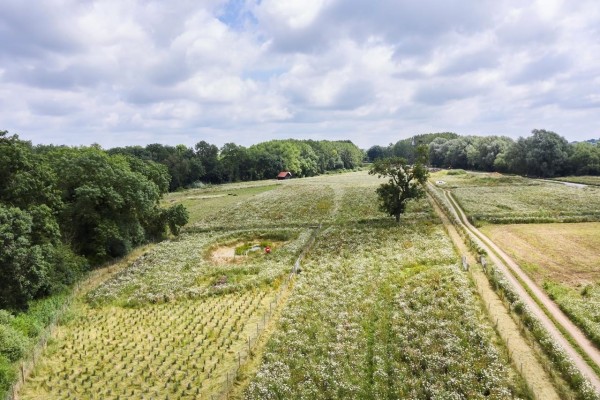Bringing our biodiversity commitment to life
At East West Rail, the environment is at the heart of all our decisions. Every step of the way we make sure nature has a proper place in our plans – and we’ve been thrilled to see the wildlife habitats created along the route between Bicester and Bletchley now coming to life.
One of our five measurable outcomes is being greener for the environment. That means supporting a thriving and diverse natural environment. So, building on our recent successes, we’ve pledged an ambitious target of 10% biodiversity net gain for the rest of the route.

Creating sanctuaries for rare and protected species
Through our efforts in the initial stage of the Project, we’ve successfully established 20 Ecological Compensation Sites (ECS) which are designed to enhance connections between habitats and safeguard species across the route.
These sites include 45 ponds, badger setts, over 70 bat boxes – and we’ve planted more than 150,000 plants and trees.
The sites have transformed previously low-diversity land into wildlife havens which are purposefully designed to cater to the needs of invertebrates, butterflies, birds, bats, reptiles, amphibians, otter and badgers.
We’ve found the positive impact also extends to rare and endangered species like black poplar trees, the elusive black hairstreak butterflies and barbastelle bats which are listed as ‘Near Threatened’ by the International Union for Conservation of Nature.
Surveys show flourishing success
To measure the success of the work we’ve done on biodiversity, we conducted surveys on the ECS and newly created habitats which showed some promising findings.
Our specially constructed bat houses are now being used by two species of bats, with three additional species recorded in the nearby area. We were excited to see bat populations across the entire Project remaining stable, showing their adaptability to the construction work.
All EWR’s newly created ponds are home to populations of great crested newts, while the vast majority of owl boxes show signs of successful breeding. The artificial badger setts have been adopted with a fifth of them being used for breeding, while an artificial otter holt has become a regular dwelling for otters.
Our pledge to the environment
Protecting the environment and developing a sustainable solution is at the core of the decisions we make. Through the efforts of ecologists, engineering designers and construction teams, it’s fantastic to see the Project already fostering thriving wildlife habitats – and we’ll ensure these sites keep flourishing for years to come.
We’re confident we can repeat this success story and deliver on our goal of achieving a 10% biodiversity net gain – and we’re more determined than ever to keep doing our bit to increase the chances for nature and wildlife in the region.
East West Rail - Our Ecological Compensation Sites
